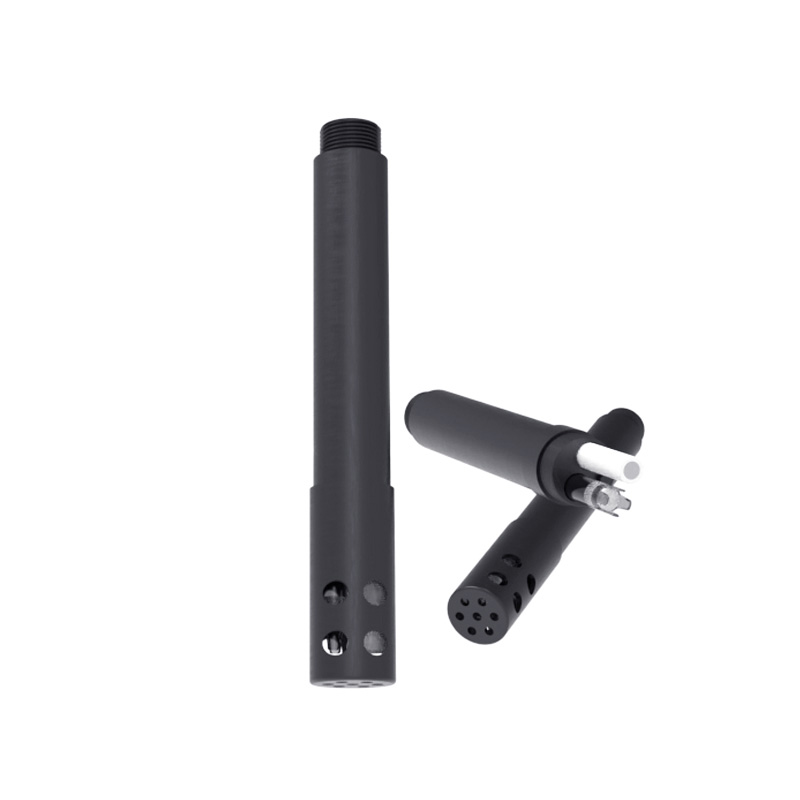Tianyi Sensor IOT Technology Co., Ltd
Sales Manager:Ms. Emily Wang
Cel,Whatsapp,Wechat:+86 15898932201
Email:info@fengtutec.com
Add:No. 155 Optoelectronic Industry Accelerator, Gaoxin District, Weifang, Shandong, China

Sales Manager:Ms. Emily Wang
Cel,Whatsapp,Wechat:+86 15898932201
Email:info@fengtutec.com
Add:No. 155 Optoelectronic Industry Accelerator, Gaoxin District, Weifang, Shandong, China

Model:FT-S14
Brand:tianyi
1.Description of Chloride Ion Sensor application environment
Chloride Ion Sensor is a high precision ion selective electrode designed for accurate chloride ion measurement and is intended to measure the concentration of sodium ions in solution.
The S14 Chloride Ion Sensor uses ion selective electrodes to test free chloride ions in water.It is fast, simple and economical, and can meet the measurement requirements of chloride ions in most industrial environment applications.
Signal output: RS-485 (MODBUS-RTU)
2.Chloride Ion Sensor technical parameters
| Measurement principle | Ion selection method |
| Output method | RS-485 (MODBUS-RTU) |
| Range | 0-3500.0mg/L |
| Resolution | 0.1mg/L |
| Accuracy | ±5%; ±0.3℃ |
| Housing material | ABS |
| Cable length | 5m |
| Power supply voltage | DC12-24V (0.4W@12V) |
| Calibration method | Two-point calibration |
| Measurement environment | 0-50℃ (no freezing) |
| Waterproof grade | IP68 |
| Installation method | Immersive mounting, NPT3/4 thread |
3.Chloride Ion Sensor Maintenance and Maintenance
In order to obtain the most stable results, it is recommended to soak the ion selection electrode in a standard solution (usually 100ppm) for 10-15 minutes before measurement until the reading is stable.
In order to obtain high-precision results, it is recommended to repeat these steps: remove the electrode from the standard solution, clean, suck dry, and then immerse it in the standard solution (soak for at least 2 minutes to obtain a stable reading) to ensure that the electrode is properly wetted and pretreated.
When the electrode is used for the first time or after long-term storage, it is necessary to soak in the standard solution overnight or even 48 hours to obtain a stable reading.After the pretreatment, spray the electrode with deionized water and carefully suck it dry with absorbent paper instead of drying it.
Place the sensor vertically when not in use, and do not place it horizontally for a long time.
The electrodes should be kept dry when the sensor is not in use for a long time.
A soil moisture monitoring system is a comprehensive station that conducts real-time monitoring of soil moisture and related environmental parameters. Equipped with high-precision sensors, it adopts technologies such as Frequency Domain Reflectometry (FDR) and Time Domain Reflectometry (TDR) to accu...
Measuring river water levels is necessary for flood control and disaster reduction. Through real-time monitoring of river water levels, we can timely grasp the changes in water levels, issue warnings before floods arrive, strive for time for personnel evacuation and property transfer, and minimize t...
To achieve efficient crop production in greenhouses, it is essential to precisely control key environmental factors:Temperature: Different crops have specific optimal temperature ranges. Excessively high or low temperatures can hinder their growth.Air humidity: Too high air humidity easily triggers...
Why measure the flow velocity of a river?First, it provides data support for water resources management. By mastering the river flow velocity, water resources can be rationally allocated to ensure the water demand for daily life and production.Second, it helps with flood control and disaster reducti...